Picking up on our wander along Av. Rivadavia from where we left off with a cup of coffee and a strawberry tart in front of us at Las Violetas, we cross relatively quickly through barrio Almagro and on into Caballito. The neighborhood begins to feel more residential, there’s still plenty of commercial establishments, but there are more apartment buildings, and what there is of a commercial presences seems more subdued.
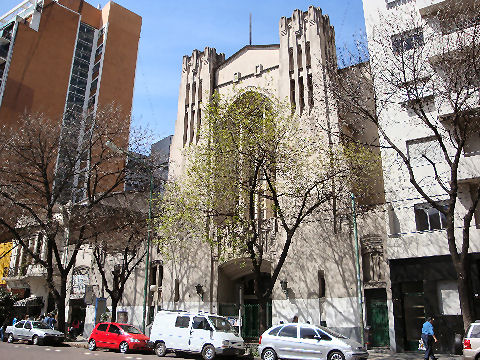
First up, at #4050, the Iglesia Metodista Central, probably best known (outside of by those who attend services here), as the site of many classical music organ concerts, and in particular, the annual Bach Academy’s choral works festival and home to the Haendel Society’s presentations.
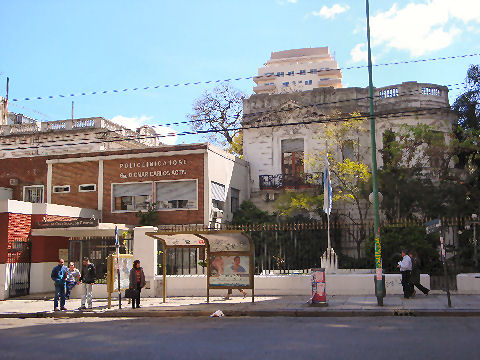
A couple of blocks further on, the Policlinica IOSE General D.O. Carlos Actis – the primarily outpatient clinic for the “obra social”, which is a sort of workers’ collective, not quite a union, for the Army, stands at #4283. I can’t tell you anything about the building, and only a little about the man whose name graces it. He was an Army general, as best I can tell was involved in forensics work, though I’m not clear in what role, and as well was the president of the World Cup organizing committee for organizing the 1978 games in Argentina. On August 19, 1976 he was ambushed and killed as he left his home to head to a press conference. While publicly attributed to terrorists, there has always been a shadow over the incident with much speculation that ESMA, the secret police here, were behind it. His assassination was used as one of the principal government excuses behind the mass execution by federal police that later became known as the Fatima Massacre:
“Before dawn on August 20, 1976, thirty illegally detained and drugged prisoners from the Intendencia were forced into a truck and driven away from Buenos Aires up Route 8 beyond the outskirts of the city. About forty miles from the city, the prisoners were unloaded from the truck, blindfolded with their hands tied, and summarily executed. Each received a shot in the head from about three feet away. To dispose of the bodies, guards piled the dead prisoners over a charge of dynamite near the town of Fatima and blew them up. Body parts were found as far as 60 feet from the explosion.”
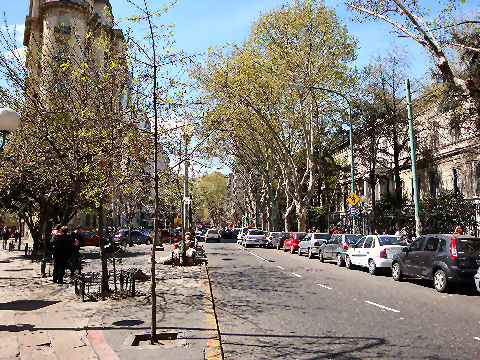
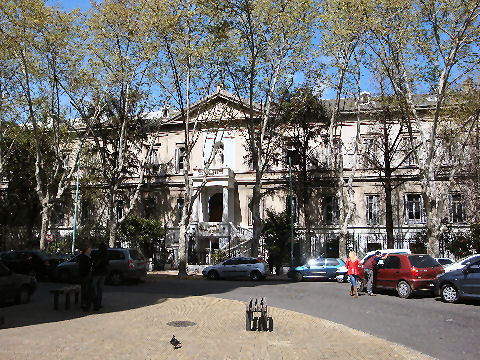
A block further on is a narrow, triangular plaza at the point where Rivadavia and Hipolito Yrigoyen come together. I wish I’d known that the building right on the point at the base of the plaza was of more note than just being a pretty building and I’d have taken a better photo – it’s the Palacio Raggio, built in 1924 as an apartment building, most noted for being, at the time, the tallest building in the zone, taking advantage of new zoning laws. It’s considered an “emblematic building” of barrio Almagro.
To the side, technically not on Rivadavia, but at Hipolito Yrigoyen 4350, stands the block-long and very imposing Instituto Sagrado Corazón (Sacred Heart Institute), a catholic college/prep school.
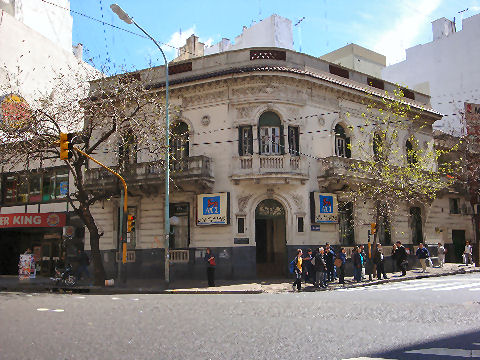
At the corner of Av. Rio de Janeiro is a 19th century home at #4601 that a bit over 20 years ago was converted to the Caballito center for the Asociacion Argentina de Cultura Ingelsa – or English Culture Institute in Argentina.
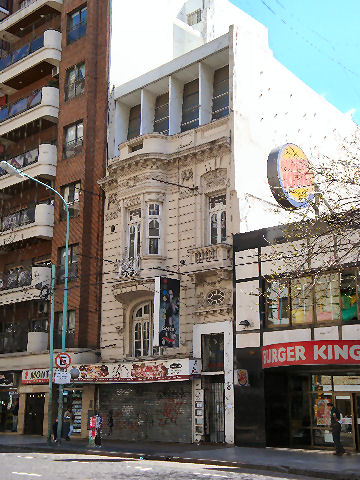
This is just one of those… “why did they do this to this building?” moments – the addition of an ugly upper floor atop a beautiful old home, and the huge Burger King icon plastered onto the side.
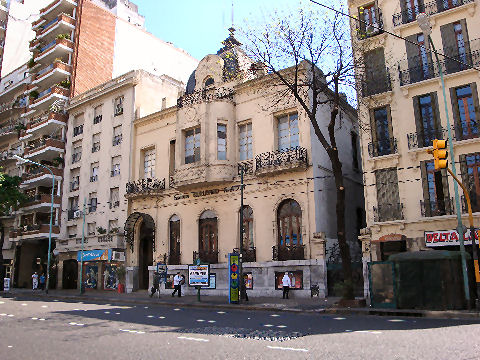
Further down the same block, the Instituto Guillermo Rawson, a private school that covers grades from pre-school through college prep. The institute has been there since May of 1932, originally as a night school for men. It is noted for its strict disciplinary approach to education.
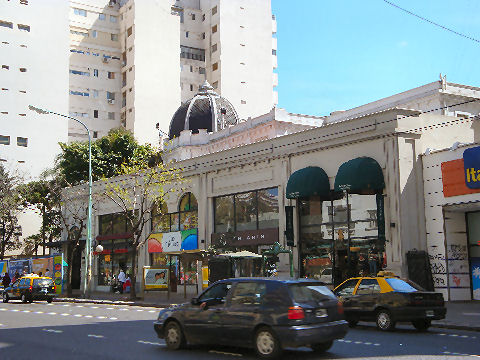
Founded in December of 1898, the Club Italiano was created by a group of Italian immigrants to Buenos Aires whose primary focus was the promotion of Italian sport cycling. Over time the club has expanded to include various sport and social activities, and, as you can see, the facade of the building has unfortunately been covered over by a mini-strip mall of sorts while the main building remains somewhat hidden behind.
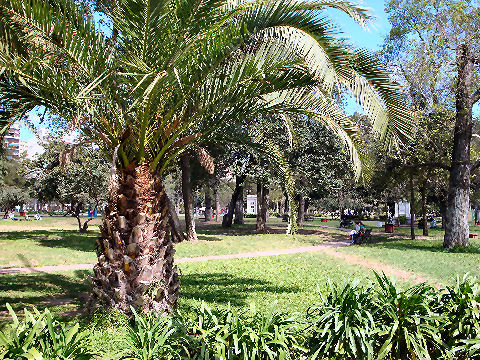
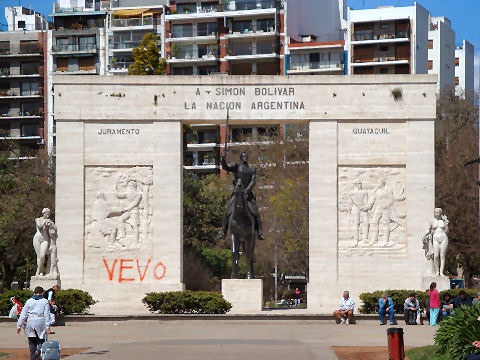
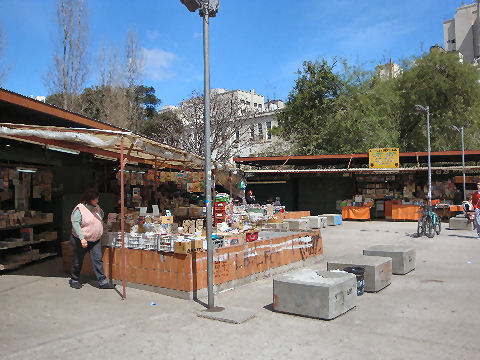
Just a block further on, the well known Parque Rivadavia (also known as Parque Lezica as it stands on the site that once was the estate of Ambrosio Lezica, built in 1846 and a refuge for the family during the later Yellow Fever epidemic that swept the city, and expropriated by the Argentine governement in 1927 to create the park). In the center of the park is a memorial to Simon Bolivar which is regularly defaced with graffiti. To the far side, a book fair that is noted publicly for a large number of antique books and magazines, and privately as the place to go to buy pirated software.
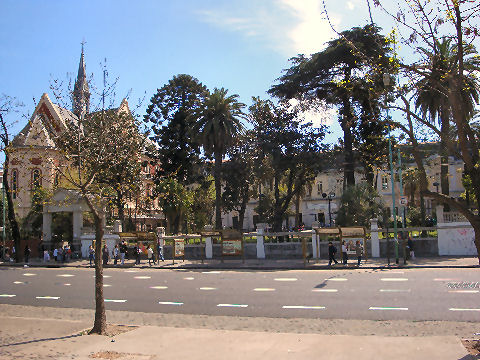
Across from the park at 4879 is the Parroquia Ntra. Sra. De Caacupé, a private catholic school named in honor of one of Paraguay’s most noted saints.
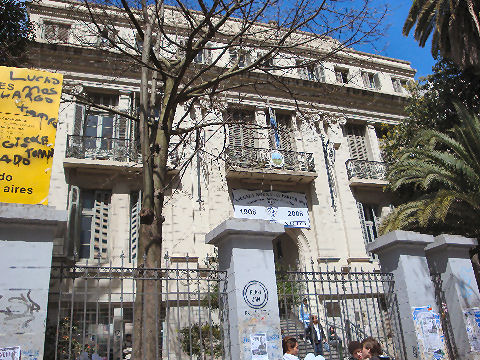
On the next block, just past the park, the Escuela Normal Superior Nº 4 “Estanislao Severo Zeballos” stands at #4950 – a public school that runs from pre-school through high school. The namesake was a politician, lawyer, writer, amongst other pursuits, and three times the minister for foreign relations, during the early 1900s.
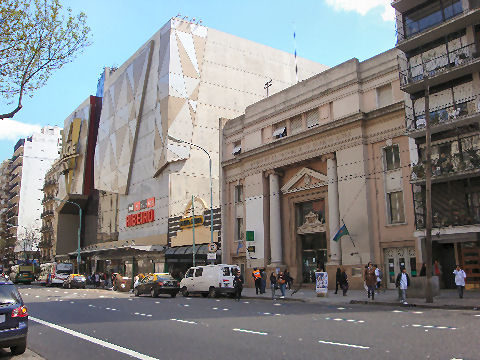
At 5071, the Village Caballito multiplex, and the imposing and far prettier Banco de la Provincia…
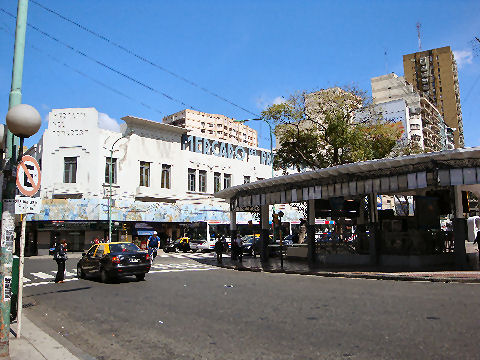
And, finally, a good stopping point at the Primera Junta subway stop (the Primera Junta, or first revolutionary congress, was held in the home of Manuel Azcuénaga, in a building somewhere near to this plaza that I believe is no longer standing) and the Mercado del Progreso, which I’ve talked about before.
[…] our last section of Av. Rivadavia we left off in the 5400 block in front of the Mercado del Progreso. Picking up […]
Excellent study of a BA borough in English!
I would like to see other places so well done.
Thanks Carlos! I have more parts of the city and walks in different areas listed on this page… and this reminds me that it’s time to get back to doing these and writing them up!